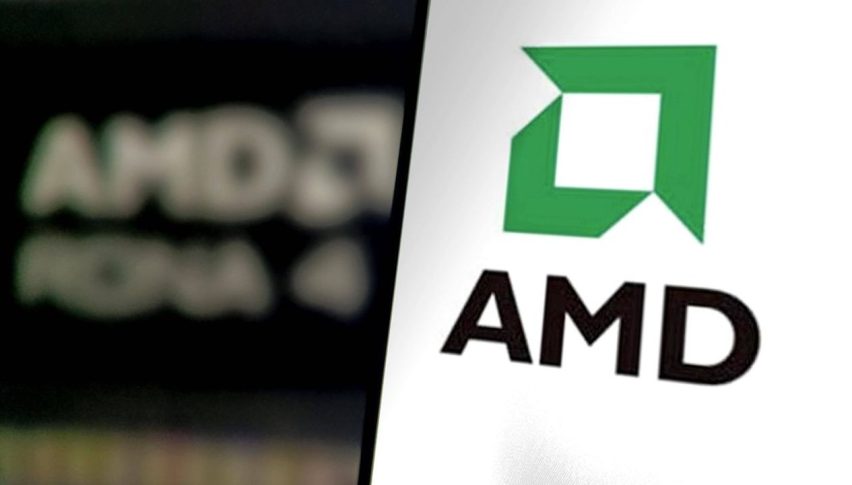Is AMD Stock a Buy After 7% Fall as Trade Tensions Rekindle Chip Selloff?
Tech stocks are plummeting as the US-China semiconductor trade war heats up, with AMD shares down 7%, but will the slide continue?

Quick overview
- Tech stocks are experiencing a significant decline, with AMD's stock dropping 8% amid heightened concerns over the US-China chip trade war.
- Despite a brief boost from delayed US tariffs on Chinese tech, investor optimism has waned, leading AMD to open at $87.65 after a previous close of $96.29.
- AMD's recent acquisition of ZT Systems has not restored investor confidence, as doubts persist regarding its strategy to compete with Nvidia amidst geopolitical tensions.
- Regulatory uncertainties and potential export restrictions are further clouding the outlook for AMD and the semiconductor sector, with significant financial risks looming.
Tech stocks are plummeting as the US-China semiconductor trade war heats up, with AMD shares down 7%, but will the slide continue?

Tech Tariff Optimism Wanes as AMD Drops Under $90
Advanced Micro Devices (AMD) is facing renewed selling pressure, sinking 8% in early session trading after comments from Federal Reserve Chair Jerome Powell reignited unease surrounding the future of technology and semiconductor equities.
While last week’s announcement of a short-term postponement of U.S. tariffs on Chinese electronics provided a brief boost to market sentiment, that optimism has quickly unraveled. AMD, which climbed 18% last week in response to the tariff delay, opened sharply lower at $87.65 today, following Tuesday’s close of $96.29. The stock failed to reclaim the pivotal $100 level, deepening its correction.
AMD Stock Chart Daily – The Lower highs Continue
The broader pullback in semiconductor stocks was exacerbated by a mix of profit-taking and increasing anxiety over escalating tensions in the U.S.–China tech conflict. The Nasdaq 100 index slid as names like AMD, Nvidia, and ASML retreated, with AMD now having declined around 60% from its March 2024 high of $227.
Although the stock had recently shown signs of recovery by moving toward its 50-day simple moving average, buyers were unable to build momentum. The failure to break above that resistance line has reinforced the bearish pattern, with a string of lower highs pointing to continued weakness in buying interest.
AMD Chart Weekly – The 200 SMA Continues to Hold
On the weekly chart though, the Advanced Micro Device share price seems to be finding support at the last line of defense. That’s the 200 SMA (purple) on the weekly chart, which stopped the decline today, and the AMD stock bounced a slightly higher.
ZT Systems Acquisition Struggles to Lift Confidence in AMD
AMD’s recent acquisition of ZT Systems for $4.09 billion, aimed at enhancing its capabilities in the high-demand server market and expanding its AI-focused hardware stack, has not reversed bearish sentiment among investors.
The company’s strategy to challenge Nvidia by merging its CPUs, GPUs, and the ROCm software ecosystem — marketed as an open-source rival to Nvidia’s CUDA — has yet to win over the market. Persistent investor skepticism suggests doubts remain over AMD’s ability to scale this model effectively, especially amid intensifying geopolitical and regulatory threats.
Tighter Export Controls and National Security Issues Cast Shadow
Increased scrutiny from Washington has added to the headwinds. Senator Elizabeth Warren has publicly voiced concern over China’s rapid advances in AI and military-grade chip technology, urging stricter limits on high-end tech exports to prevent potential misuse.
The U.S. government is now weighing broader export restrictions, which could directly impact AMD’s MI308 AI chips. These accelerators are currently prohibited from being shipped to China, Hong Kong, Macau, and other regions listed under national security category D:5.
AMD has announced plans to seek export clearance through licensing applications, but whether these will be approved remains uncertain. The company has warned of a possible revenue hit of up to $800 million if those licenses are denied — a significant figure that underscores the risks tied to exposure in restricted territories. With Nvidia facing comparable barriers and sliding to the $90 level, the entire semiconductor space is confronting intense pressure from both regulatory shifts and global competition.
Conclusion: Innovation Overshadowed by Policy Risk
Going forward, AMD’s trajectory — like that of its chipmaking peers — is increasingly entangled with global policy developments as much as with product execution. Despite compelling technology initiatives and recent M&A activity, investor reluctance is growing. Until clarity emerges on trade policies and regulatory permissions, the market appears hesitant to price in a bullish scenario for AMD or the semiconductor sector at large.
- Check out our free forex signals
- Follow the top economic events on FX Leaders economic calendar
- Trade better, discover more Forex Trading Strategies
- Open a FREE Trading Account





